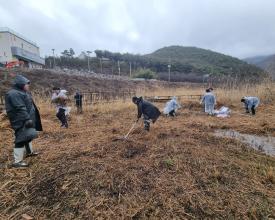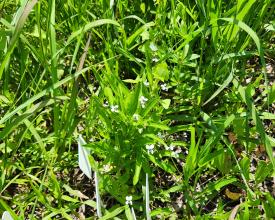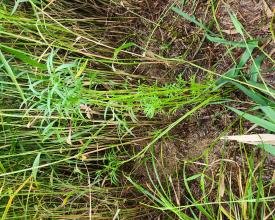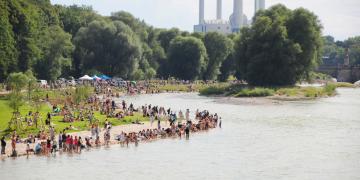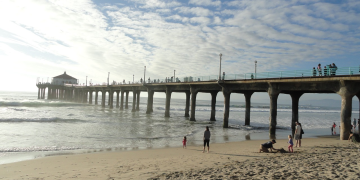
Habitat Conservation Activities for Endangered Plants in Yangsan Wondong Wetland
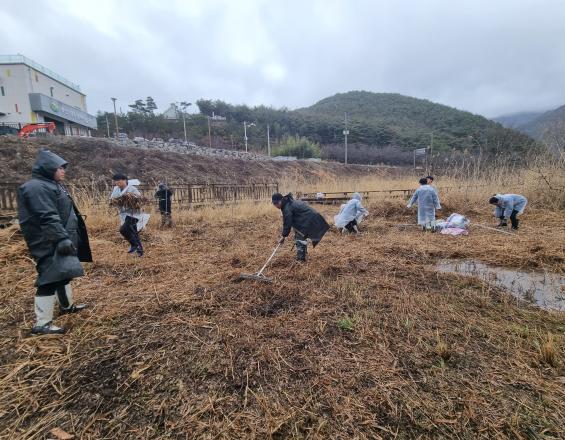
Wondong Wetland in Yangsan, Korea, is a rare habitat for Korea's endangered plants, such as the Viola raddeana Regel and Pterygopleurum neurophyllum (Maxim.) Kitag.. In particular, it is known as the only habitat in Korea for Pterygopleurum neurophyllum (Maxim.) Kitag. Wondong Wetland is a wetland behind the Nakdong River that was once used as agricultural land and was restored to its natural state. However, as plants such as silver grass expanded, the population of endangered plants decreased due to competition. To expand the population of the two endangered plants, an event was held in February 2023 (winter season) with citizens to cut down grass, including silver grass, a competing species. As a result, the germination rate of the two plant species increased, and their habitat range expanded. Grass cutting was also carried out in February 2024, and it is planned to be carried out in the future before the germination period in February every year.
Impacts
After the removal of competing plants was implemented, the number of germinated Viola raddeana Regel increased by 63.5% in 2023 compared to 2022, and in 2024, it increased by 6.6% compared to 2023. In the case of Pterygopleurum neurophyllum (Maxim.) Kitag., it increased by 24.7% in 2023 compared to 2022, and increased by 196.2% in 2024 compared to 2023, showing a good effect in removing competing plants. Additionally, the population distribution area and number of distribution groups also increased. By carrying out habitat improvement activities with local governments and citizens through citizen participation habitat improvement activities, we are making it possible to preserve the habitats of endangered species in the long term.
